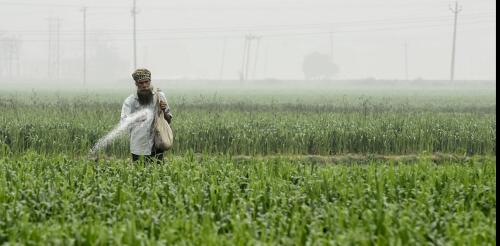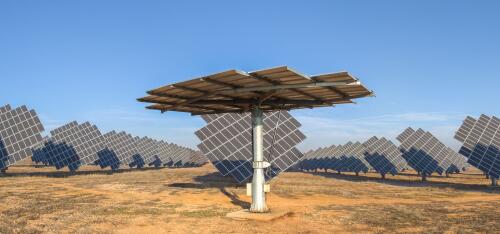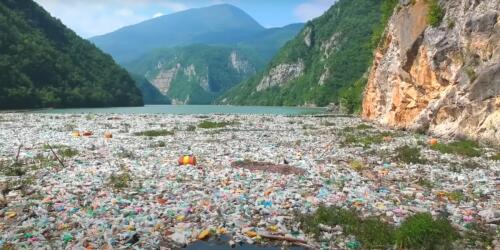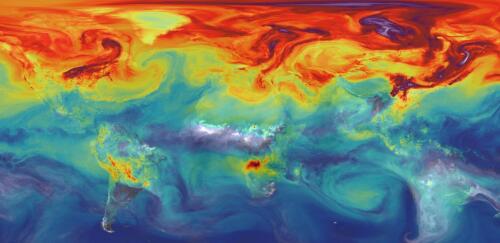India
Global heat has seared to new extremes in recent months, and devastating climate disasters are providing powerful reminders of the costs of climate change, as governments around the world prepare for the 2023 United Nations climate summit that starts on Nov. 30. While a small window of hope remains for meeting the goals of the 2015 Paris climate agreement, the world’s greenhouse gas emissions continue to rise. This year’s climate summit, COP28, needs to be transformative. What will it take to harness a spirit of international cooperation in today’s complex, divisive and volatile world abounding in self-interest? As a former senior U.N. official, I worked for years in multilateral consensus building among often hugely divergent parties. Here are some of the challenges and negotiating techniques I expect to see as representatives from countries around the world come together in Dubai. The challenge of national self-interest To slow climate change, the world m...
Feeding a growing world population has been a serious concern for decades, but today there are new causes for alarm. Floods, heat waves and other weather extremes are making agriculture increasingly precarious, especially in the Global South. The war in Ukraine is also a factor. Russia is blockading Ukrainian grain exports, and fertilizer prices have surged because of trade sanctions on Russia, the world’s leading fertilizer exporter. Amid these challenges, some organizations are renewing calls for a second Green Revolution, echoing the introduction in the 1960s and 1970s of supposedly high-yielding varieties of wheat and rice into developing countries, along with synthetic fertilizers and pesticides. Those efforts centered on India and other Asian countries; today, advocates focus on sub-Saharan Africa, where the original Green Revolution regime never took hold. In this Oct. 25, 2000, episode of the television drama ‘The West Wing,’...
The weekly round-up on the climate crisis and data on carbon dioxide levels in the atmosphere. Last week, a summit was held in Paris on how to enable low-income countries most exposed to the impacts of the climate crisis to grow their economies by reducing their dependence on fossil fuels [we'll talk about it in detail later]. What can the 54 countries of the African continent do to contribute to the decarbonisation of the world?Can Africa make a leap in quality and combine energy transition and economic growth?These are the questions that the journalist of New York Times, Somini Sengupta, he addressed to Wanjira Mathai, director general for Africa and global partnerships at the World Resources Institute (WRI), and Rebekah Shirley, senior environmental researcher and deputy director for Africa at WRI. These two simple questions opened up deeper questions having to do with the financial sustainability of the energy transition, the capacity of the electricity grid and...
The weekly round-up on the climate crisis and data on carbon dioxide levels in the atmosphere. A new relationship of the United Nations Environment Program (UNEP), “Turning off the Tap:How the world can end plastic pollution and create a circular economy” (“Turn off the tap:how the world can end plastic pollution and create a sustainable circular economy”), outlined a roadmap to dramatically reduce plastic pollution. According to the report – which outlines the scale and nature of the changes needed to create a sustainable, human- and environmentally-friendly circular economy – plastic pollution could be reduced by 80% by 2040 if countries and companies used existing technologies to make significant policy and market changes. Plastic pollution could reduce by 80% by 2040 if governments and companies make policy and market shifts using existing technologies.OUT NOW – UNEP’s new report provides a pathway for nations to...
The weekly round-up on the climate crisis and data on carbon dioxide levels in the atmosphere. The idea of doing a weekly round-up on the climate crisis was born in the wake of the climate newsletter Guardian which every week publishes data on carbon dioxide in the atmosphere, an indicator that tells us the state of the climate crisis and the health of our planet.This week, the atmospheric concentration of CO2, the greenhouse gas primarily responsible for global warming, exceeded 424 parts per million (ppm) for the first time.In recent days it had already exceeded 423.More than half of the CO2 produced by human activities, from the Industrial Revolution to today, was released in the atmosphere since 1990.Unfortunately, this data is not newsworthy and is not reflected in the climate policies of governments, whose actions to cut emissions are regularly deferred over time in the name of energy security (and to guarantee the difficult compromises required by the ecological transition).An...




